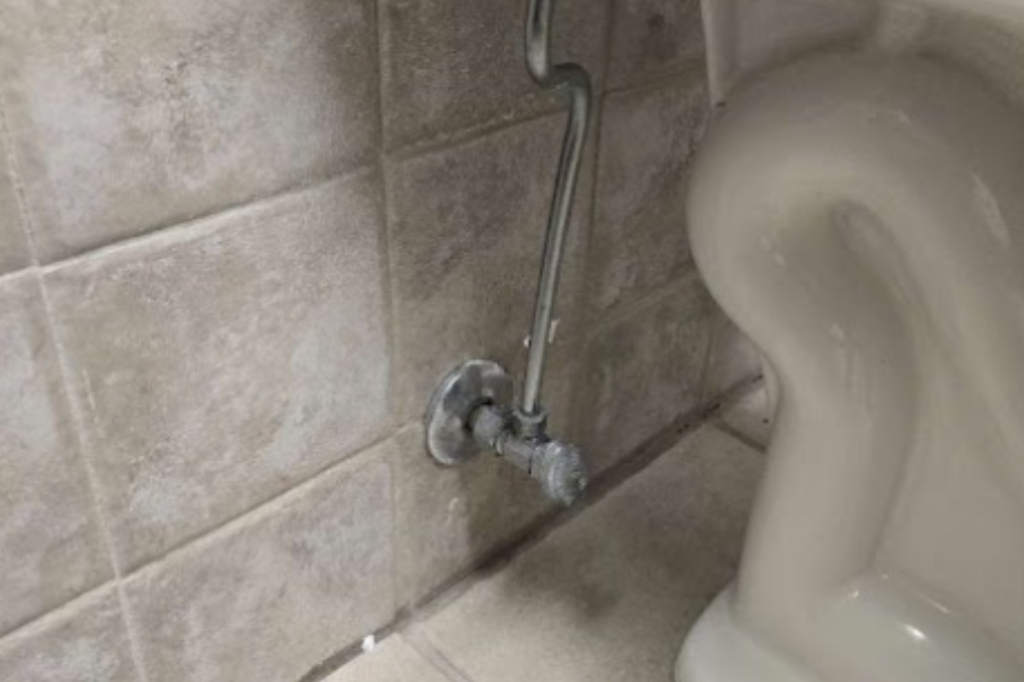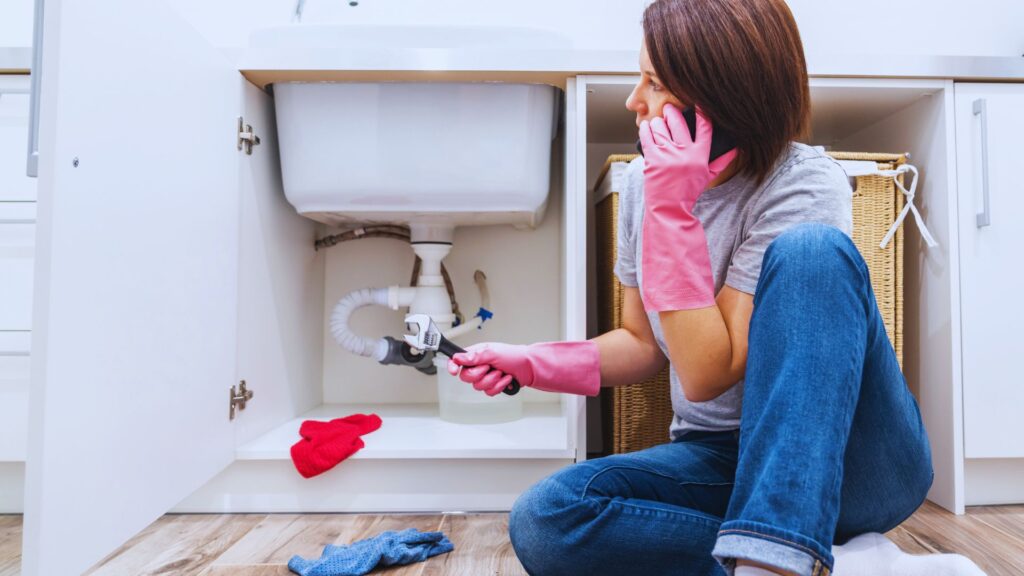When you’re tasked with managing large-scale plumbing projects, whether in retail spaces or industrial complexes, it’s vital to grasp the intricacies involved. You’ll need to take into account everything from project scope and compliance to the latest technologies that can streamline your efforts. Effective collaboration and communication with various trades can make or break a project, and understanding the right materials is essential. However, the challenges don’t end there; as you navigate these complexities, you’ll quickly realize there’s more at stake than just installation. What’s the secret to ensuring success in such demanding environments?
Understanding Project Scope
When tackling a large-scale plumbing project, understanding the project scope is crucial for successful execution. You’ll want to start by clearly defining the project objectives. This involves determining what needs to be accomplished, the specific requirements, and the overall goals of the plumbing system you’re implementing.
Having a well-documented scope helps you avoid misunderstandings and keeps everyone aligned.
Stakeholder involvement is another important element in defining your project scope. Engaging all relevant stakeholders early in the process guarantees that their needs and expectations are considered. This not only fosters a sense of belonging but also helps in identifying potential challenges and opportunities.
Regular communication with stakeholders will keep them informed and engaged, making it easier to address any concerns that arise.
As you outline the project scope, be sure to include timelines, resource allocation, and budget considerations. Each of these elements plays a crucial role in guiding your project from inception to completion.
A clear scope will also serve as a reference point throughout the project, facilitating decision-making and helping you stay on track.
Key Plumbing Regulations
A clear project scope lays the groundwork for understanding the regulatory landscape governing plumbing installations. When you’re tackling large-scale plumbing projects, adhering to plumbing codes and installation guidelines isn’t just a formality; it’s essential for guaranteeing safety, compliance, and efficiency.
Here are some key regulations you should keep in mind:
- Local Plumbing Codes: Each jurisdiction has its own plumbing codes, which dictate the standards for installation and maintenance. Always check with local authorities to guarantee compliance.
- International Plumbing Code (IPC): Many regions adopt the IPC, which provides a thorough set of regulations for plumbing systems. Familiarize yourself with its requirements to guarantee your project meets national standards.
- Health and Safety Regulations: Plumbing work must adhere to health and safety standards that protect workers and occupants. These regulations often address issues like backflow prevention and water quality management.
- Environmental Guidelines: Increasingly, plumbing projects must consider environmental impact. Regulations may specify sustainable practices, such as using low-flow fixtures or materials that minimize waste.
Understanding these key plumbing regulations not only helps you avoid potential fines and delays but also builds trust with stakeholders.
Selecting the Right Materials
Selecting the right materials is essential for the success of large-scale plumbing projects, as the quality and suitability of materials directly impact system performance and longevity. You’ll want to prioritize material durability to guarantee that the plumbing systems can withstand the rigors of their operational environment, whether it’s in a bustling retail space or a complex industrial facility.
Materials like high-density polyethylene (HDPE) or corrosion-resistant stainless steel are often recommended for their strength and longevity.
Cost effectiveness is another critical factor. While it might be tempting to choose the cheapest options, investing in higher-quality materials can save you money in the long run. Low-quality materials may lead to frequent repairs and replacements, which can quickly add up.
When selecting materials, consider their life cycle costs, including installation, maintenance, and potential downtime. This all-encompassing approach not only guarantees reliability but also aligns with sustainable practices that many organizations value today.
Furthermore, keep in mind the specific requirements of your project. Different applications may necessitate specialized materials, such as fire-rated pipes for high-risk areas or flexible piping systems for unique layouts.
Collaborating with suppliers who understand these nuances can help you make informed decisions. Ultimately, your choices in materials will play a pivotal role in the project’s overall success, enhancing performance and fostering a sense of belonging within your team as you work together towards a common goal.

Advanced Technology in Plumbing
The choice of high-quality materials sets the foundation for integrating advanced technology into plumbing systems. This integration not only enhances efficiency but also guarantees long-term reliability.
As you begin commercial plumbing in Aurora projects, embracing smart plumbing solutions and innovative tools becomes essential. Here’s how you can leverage advanced technology effectively:
- Smart Sensors: These devices monitor water flow and detect leaks in real-time, allowing for proactive maintenance and reducing water waste.
- Automated Control Systems: Using programmable systems can help regulate water temperature and pressure automatically, increasing comfort and energy efficiency.
- 3D Modeling Software: This technology aids in planning and visualizing plumbing layouts, minimizing errors and improving collaboration among team members.
- Pipe Inspection Robots: These innovative tools navigate through pipes to assess their condition without extensive excavation, saving time and resources.
Coordinating With Other Trades
While coordinating with other trades can be challenging, effective communication and collaboration are fundamental for the success of large-scale plumbing projects. You’ll quickly find that fostering strong trade communication is crucial. Every trade involved—whether electricians, HVAC specialists, or drywall installers—plays a key role in the overall project. Establishing a cohesive team mindset guarantees that everyone is aligned with the project’s objectives.
Implementing collaborative planning can greatly enhance your efficiency. Begin by scheduling regular coordination meetings where all trades can discuss progress, challenges, and upcoming tasks. This creates a space for open dialogue, allowing you to address potential conflicts before they escalate. For instance, if plumbing and electrical work overlap, early discussions can prevent costly rework and scheduling delays.
Utilizing technology can also streamline communication among trades. Cloud-based project management tools enable real-time updates and document sharing, assuring everyone has access to the latest project information. This transparency fosters accountability and strengthens relationships among team members.
Moreover, it’s critical to clearly define each trade’s responsibilities. When everyone knows their role and how it interconnects with others, you’ll see a more fluid workflow. Encourage feedback and adaptability, as this not only builds a sense of community among trades but also leads to innovative problem-solving.
Managing Project Timelines
To guarantee your large-scale plumbing project stays on track, managing timelines effectively is vital. By prioritizing specific strategies, you can assure that your project progresses smoothly while accommodating any necessary adjustments.
Here are four significant components to reflect on:
- Establish Clear Milestones: Break the project into manageable phases and define key milestones. This will help you monitor progress and maintain focus on major deliverables.
- Implement Milestone Tracking: Use project management tools to track achievements against your milestones. Regular updates will provide visibility into the project’s status, allowing for timely interventions if needed.
- Maintain Timeline Flexibility: While sticking to a timeline is important, it’s equally essential to remain adaptable. Unexpected challenges may arise, and having a flexible approach will enable you to pivot without derailing the entire project.
- Communicate Regularly: Keep open lines of communication with your team and other stakeholders. Regular check-ins will help everyone stay aligned and informed about any changes to the timeline or project scope.
Budgeting for Large Projects
Effective budgeting is crucial for the success of large-scale plumbing projects, as it directly impacts every phase of execution. When you begin such a project, accurate cost estimation becomes a critical first step. You’ll need to assess material costs, labor expenses, and potential unforeseen challenges. By breaking down the project into smaller components, you can create a detailed financial plan that guarantees you’re allocating resources effectively.
Financial forecasting plays a significant role in this process. It allows you to predict future costs and adjust your budget accordingly. You should consider factors like inflation, changes in labor rates, and fluctuating material prices. This foresight will help you avoid budget overruns and guarantee you’re prepared for any financial surprises.
Communicating your budget to all stakeholders is essential. This transparency fosters trust and encourages collaboration. Working together, your team can identify cost-saving opportunities and explore alternative solutions.
Regularly revisiting your budget during the project helps you stay on track and make necessary adjustments.
In the end, successful budgeting for large plumbing projects isn’t just about crunching numbers; it’s about creating a shared vision among your team. By fostering a culture of accountability and open communication, you can guarantee everyone is aligned with the financial goals and objectives.
With careful planning and coordination, you’ll navigate the complexities of large-scale plumbing projects with confidence and precision.
Quality Assurance Practices
Quality assurance practices are essential for guaranteeing that large-scale plumbing projects meet both regulatory standards and client expectations. When you prioritize these practices, you not only enhance the quality of your work but also foster trust within your team and with your clients.
Here’s how you can implement effective quality control measures throughout your projects:
- Establish Clear Standards: Define the quality benchmarks that align with industry regulations and client specifications. This clarity helps everyone involved understand the expectations.
- Implement Rigorous Inspection Processes: Conduct regular inspections at various stages of the project. This includes pre-installation checks, mid-project evaluations, and final assessments to guarantee compliance with established standards.
- Utilize Qualified Personnel: Ensure that your team includes licensed and experienced professionals who can recognize potential issues early. Their expertise is invaluable in maintaining quality throughout the project.
- Document Everything: Keep a detailed record of inspections, tests, and adjustments made during the project. This documentation not only serves as a reference but also provides transparency and accountability.
Safety Protocols in Plumbing
While managing large-scale plumbing projects, adhering to safety protocols is essential for protecting both workers and the integrity of the installation. Implementing thorough risk assessments at the onset allows you to identify potential hazards, guaranteeing a proactive approach to safety.
Evaluating the workspace for risks such as exposure to harmful substances, heavy machinery, or confined spaces is imperative. This assessment creates a roadmap for effective safety measures.
Once risks are identified, you should establish clear emergency procedures. Confirm all team members are familiar with protocols for various situations, including leaks, equipment failures, or personal injuries. Regular drills can help reinforce these procedures, building confidence among workers and fostering a team-oriented environment.
Personal protective equipment (PPE) is another important component of your safety strategy. Making sure that workers are equipped with appropriate PPE, such as gloves, goggles, and hard hats, minimizes injury risks.
Regular inspections of this equipment for wear and tear can prevent accidents.
Additionally, cultivating a culture of safety means encouraging open communication among team members. Make it easy for workers to report unsafe conditions or behaviors without fear of reprisal.
This transparency not only enhances safety but also strengthens team cohesion.
Case Studies of Success
Successful large-scale plumbing projects often hinge on learning from previous experiences, and several case studies illustrate how strategic planning and execution can lead to remarkable outcomes. By analyzing these examples, you can glean insights that will enhance your own projects and address common project challenges.
- Innovative Materials: A recent industrial complex utilized advanced piping systems, reducing installation time by 30%. By embracing plumbing innovations, they decreased overall costs while enhancing durability.
- Collaborative Planning: In a large retail space, a multi-disciplinary team collaborated early in the design phase. This proactive approach identified potential plumbing challenges, allowing them to devise solutions before construction began.
- Real-Time Monitoring: An office building integrated IoT technology to monitor water usage. This innovation not only improved efficiency but also helped identify leaks instantly, mitigating costly repairs.
- Adaptive Scheduling: A manufacturing facility faced downtime due to plumbing issues. By implementing a flexible work schedule, they minimized disruptions and guaranteed project timelines remained intact.
These case studies emphasize the importance of leveraging plumbing innovations to tackle project challenges effectively. Each example showcases how strategic foresight, collaboration, and technology can transform outcomes.
Final Thoughts
In summary, managing large-scale plumbing projects demands meticulous planning and collaboration. Did you know that implementing advanced technology can reduce project completion time? By leveraging 3D modeling and smart sensors, you can enhance efficiency and accuracy. Prioritizing safety protocols and adhering to regulations not only guarantees compliance but also fosters a reliable plumbing system. With Pipe It Up, you can navigate the complexities of plumbing in retail and industrial environments with confidence and expertise.



